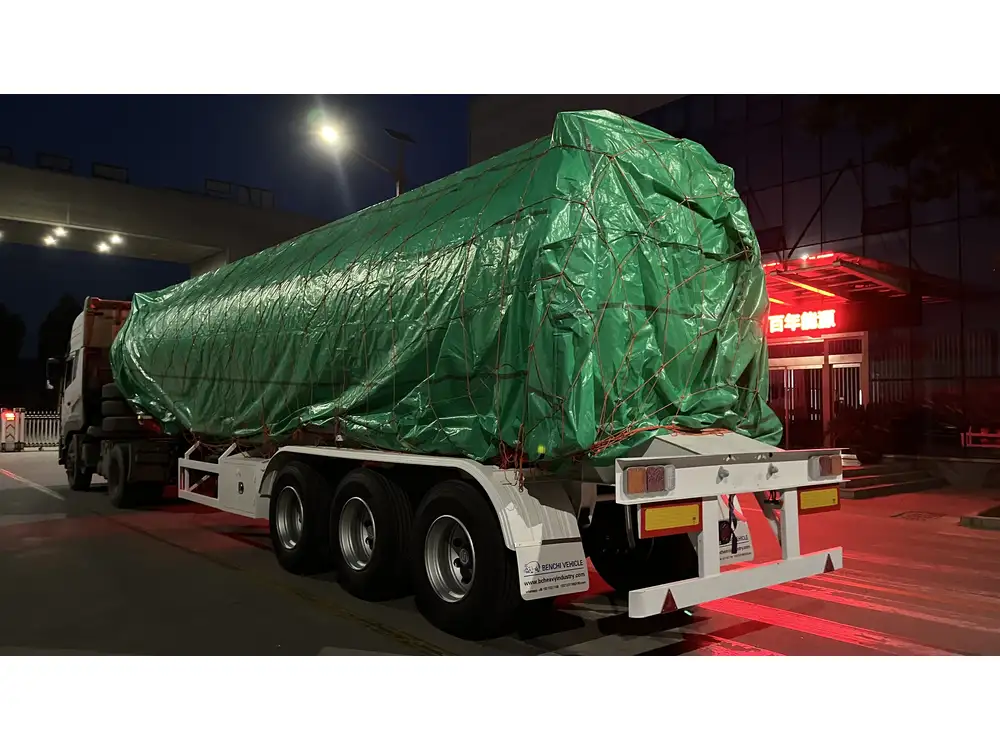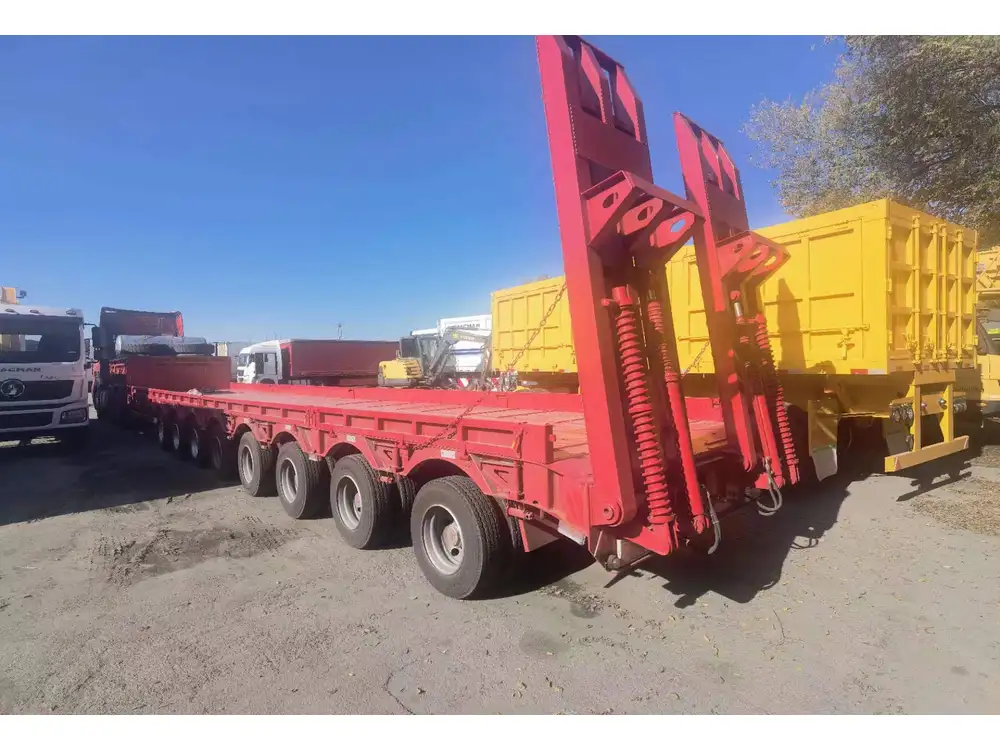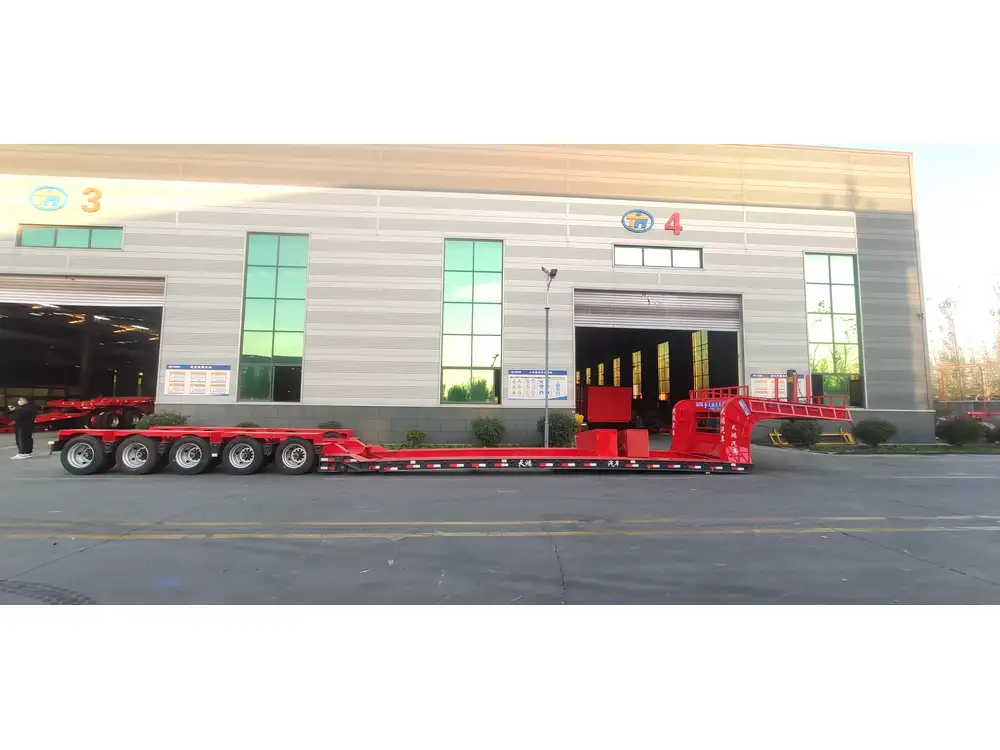Adjusting the brakes on semi-trailers is crucial for ensuring not only the efficiency of the braking system but also the safety of the driver and other road users. In this detailed guide, we will explore the exact methods for adjusting semi-trailer brakes, factors affecting their performance, common issues faced, and best practices that every truck operator should know.
Understanding Semi-Trailer Brake Systems
Before diving into the adjustment processes, it’s vital to grasp the types of brake systems commonly found on semi-trailers. Generally, semi-trailers utilize two main types of braking systems: air brakes and electric brakes. Knowing the type of system your trailer uses is essential for the appropriate adjustment method.
Types of Brake Systems
| Type of Brake | Description |
|---|---|
| Air Brakes | Use compressed air to apply force to brake pads; commonly found in larger trucks and trailers. |
| Electric Brakes | Operated by electric current from the vehicle, these are more common in lighter trailers. |

Key Components of Semi-Trailer Brake Systems
- Brake Pads: The friction material that clamps against the rotor to slow down the trailer.
- Brake Drums/Rotors: The component that the brake pads press against.
- Slack Adjusters: Mechanisms that facilitate the adjustment of the brake’s distance.
- Air Chambers (for air brakes): Devices that convert air pressure into force that applies the brakes.
Steps to Adjust Semi-Trailer Air Brakes
Safety Precautions
- Park on Level Ground: Always ensure that the semi-trailer is parked on a flat and stable surface to avoid any accidents.
- Use Wheel Chocks: Place chocks behind the wheels to prevent rolling.
- Wear Protective Gear: Gloves and safety glasses are essential.

Step-by-Step Adjustment Process
Initial Inspection: Before making adjustments, inspect the brake pads for wear and the overall condition of the braking system.
Locate the Slack Adjuster: On the axle of your semi-trailer, find the slack adjuster on the air brake system. It is typically a long arm connected to both the air chamber and the brakes.
Measure the Brake Stroke:
- Apply the brakes using the trailer’s control, and then measure the stroke (the distance the push rod moves).
- For air brakes, the maximum stroke limitation is often about 2 inches.
Adjusting the Slack Adjuster:
- Turn the adjustment bolt clockwise to tighten and counter-clockwise to loosen.
- Adjust until the stroke is within the manufacturer’s recommended guidelines.
Test the Brakes: After adjustment, it’s essential to test the brakes:
- Re-apply the brakes and measure the stroke again.
- Ensure each time the applied brake pressure remains consistent across the system.
Repeat for Each Wheel: Perform this process for each wheel on the semi-trailer to ensure even brake performance.
Adjusting Electric Brakes
Step-by-Step Adjustment Process
Inspect the Brake Components: Before adjustment, inspect for any signs of wear and ensure all electrical connections are functioning properly.
Locate the Adjustor: Electric brakes have a manual adjustor located on the brake assembly or back of the drum.
Adjustment Mechanism:
- Use a wrench or ratchet to turn the adjustor clockwise. Typically, this adjusts the brake shoes closer to the drum.
- Ensure the drum spins freely after adjustment; this indicates that the brakes are correctly set.
Check Brake Controller Setting: Make sure that the brake controller in your cab is set appropriately to maintain optimal function.
Road Test: Conduct a road test to ensure that the electric brakes engage and release effectively during dynamic conditions.

Common Issues with Semi-Trailer Brakes
While you’re well-equipped to adjust your semi-trailer brakes, several common problems could arise, affecting their performance:
Uneven Brake Wear
Causes:
- Imbalance in trailer load distribution
- Faulty brake system components
Brake Fade
Causes:
- Overuse during heavy loads
- Insufficient cooling time between applications

Air Leaks in Air Brakes
Symptoms:
- Inconsistent brake application
- Increased air compressor cycling
Addressing Common Brake Issues
Uneven Brake Wear
- Regular Load Checks: Ensure a balanced load distribution to prevent excess strain on one axle.
- Routine Inspections: Conduct inspections every few thousand miles, particularly if your load varies significantly.

Brake Fade
- Optimize Equipment Usage: Be mindful of frequent, sudden stops; try to moderate speed and braking distance when carrying heavy loads.
- Install Upgraded Components: High-friction brake pads that withstand higher temperatures may help.
Air Leaks in Air Brakes
- Air System Check: Routinely check the air system for leaks by conducting a pressure drop test.
- Component Replacement: Replace any damaged hoses, seals, or fittings immediately.
| Common Issues | Symptoms | Solutions |
|---|---|---|
| Uneven Brake Wear | irregular braking response | Regular load checks, routine inspections |
| Brake Fade | Increased stopping distance | Optimize equipment usage, install upgraded components |
| Air Leaks | Compressed air loss | Ongoing air system checks, immediate replacement of damaged components |
Importance of Regular Maintenance
Maintaining your semi-trailer brake system should not be taken lightly. Regular adjustments and inspections significantly enhance safety and operational efficiency. Consider scheduling mechanical checks every 10,000 to 15,000 miles.

Advanced Braking Technologies to Consider
As trucking technology advances, many manufacturers are incorporating innovative solutions to improve braking efficiency. Some key technologies include:
Anti-lock Braking Systems (ABS): Prevent wheels from locking up during heavy braking, allowing the trailer to maintain control.
Electronic Stability Control (ESC): Monitors the movement of the trailer and intervenes when it detects a potential skid or slide.
Brake Assist Features: Provides additional braking pressure in emergency situations to enhance stopping power.
Conclusion
In the highly demanding field of transporting goods, no component is as critical for safety and efficiency as a well-functioning brake system. The knowledge and skills to adjust semi-trailer brakes effectively can mean the difference between an accident-free journey and a catastrophic failure.
By mastering the adjustments of air and electric brakes, addressing common issues immediately, and employing advanced braking technologies, we not only ensure the longevity of our trailer systems but also uphold the safety standards required in our industry. Regular maintenance and conscientious adjustment procedures will optimize the performance of your semi-trailer, ultimately preserving both assets and lives during transit.
Embrace a proactive approach to semi-trailer brake maintenance, and foster a culture focused on safety and efficiency within your operations.



